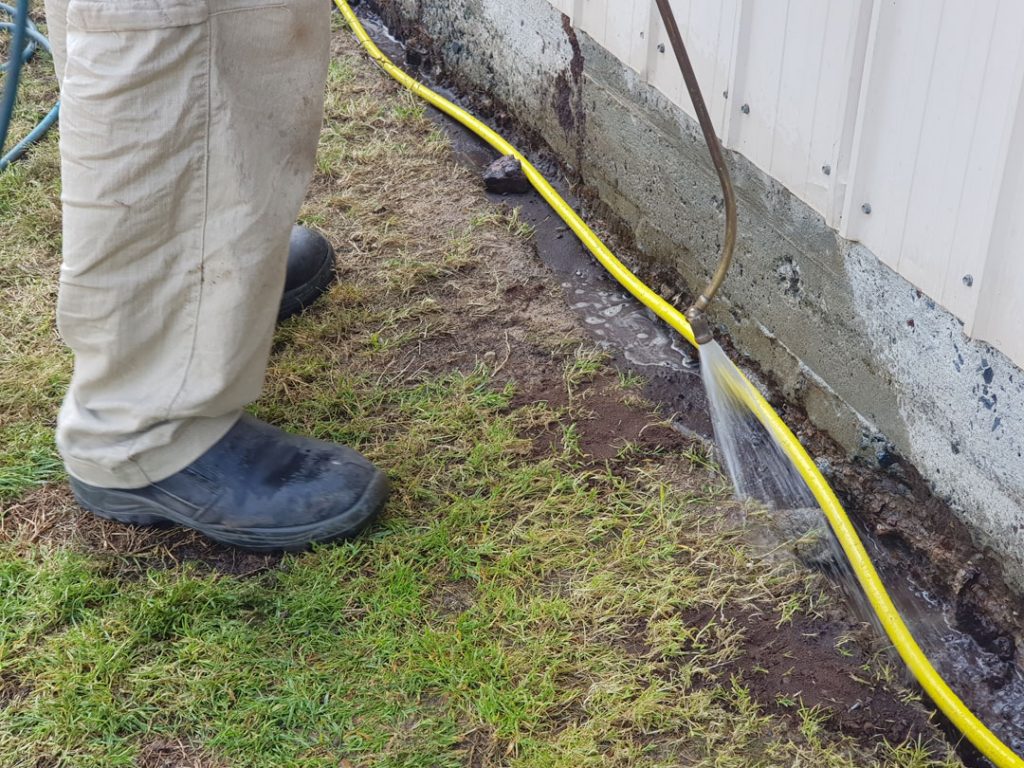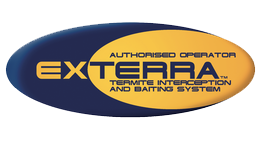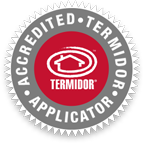Termite management – Chemical Vs Baiting
Are you confused about what termite system is best for you?
Let us help you protect your home
Chemical Barrier vs Termite Baiting Systems
The real question is which Termite Management System will best suit your property.
CHEMICAL
The days of treating termites with long-lasting organophosphate and organochlorides chemicals are over.
These toxic chemicals have since been replaced with biodegradable chemical formulations such as bifenthrin, fipronil and imidacloprid to name a few. These groupof chemicals will kill termites by either direct contact (repellents) or social transfer (non-repellents).

BAITING
The past 20 years has seen a massive shift towards replacing chemical applications with insect growth regulators.
This method of termite control is an environmentally friendly safer method of effectively achieving termite colony elimination.
Termites feed and transfer the bait to the rest of the termite colony including the Queen. The bait is a formulated insect growth regulator that inhibits the termites development, ultimately achieving termite colony elimination.

WHAT PEST IS BUGGING YOU?
WE CAN HELP YOU
We understand dealing with pests can be stressful, but there is no pest problem too big for us. Let us worry about the pests, while you get on with the rest.
By answering a few simple questions, we can help you, get rid of the pests bugging you.
*All your information will only used for a quote or booking.
How Termite Interception and Baiting Works
Baiting systems have become a very common and accepted alternative to chemical barriers. The termite monitoring stations are designed to intercept termites that are foraging close to your home. The stations are strategically installed around the house in areas that are considered conducive to termites. Regular monitoring and baiting active stations is a sure way to eliminate active termite colonies that are in close proximity to the house. The bait is an Insect growth regulator. The termites feed and share the bait which affects the termites by softening their exoskeleton, mandibles and most importantly sterilizes the queen. Colony elimination is established during the next termite moult.
Termite Baiting System Pros
- Cleaner installation process
- Regular reports and checks that keep the customer up to date
- Easy to identify colony elimination
- Bait stations can be repositioned with little disturbance
- Once termites begin to feed on bait they stop feeding on home
Termite Baiting System Cons
- It may take a few months to eliminate a termite colony including the queen
- Ongoing monitoring of baiting system is required
How Chemical Management Works
Termites are a social insect that are continually communicating feeding and mating with each other. Termicides are designed to either work as a repellent or non-repellent for termite activity or termite infestations. Put simply a termicide repellent will kill subterranean termites on contact creating a barrier around the dwelling whereby a non-repellent termicide allows the termites to spread the chemical further throughout the termite colony to take further back into their nest.

Chemical Termite Management Pros
- Once injected there is no need to monitor or disturb the area
- Chemicals will kill the termites and potentially eradicate the surrounding colonies that come into contact with it
- Termite treatments should come with a warranty against further invasion
Chemical Termite Management Cons
- The possible need for cutting or drilling concrete and tiles, trenching around the base of the home
- Difficult to confirm if chemical has penetrated down to the footing when drilling through concrete
- Bridging across barriers with gardens and paths and extensions will need barriers to be reinstalled to keep warranty
- Impossible to identify if chemical has eliminated the termite colony
A Termite Inspection will identify the best method of Termite Control for your Home





